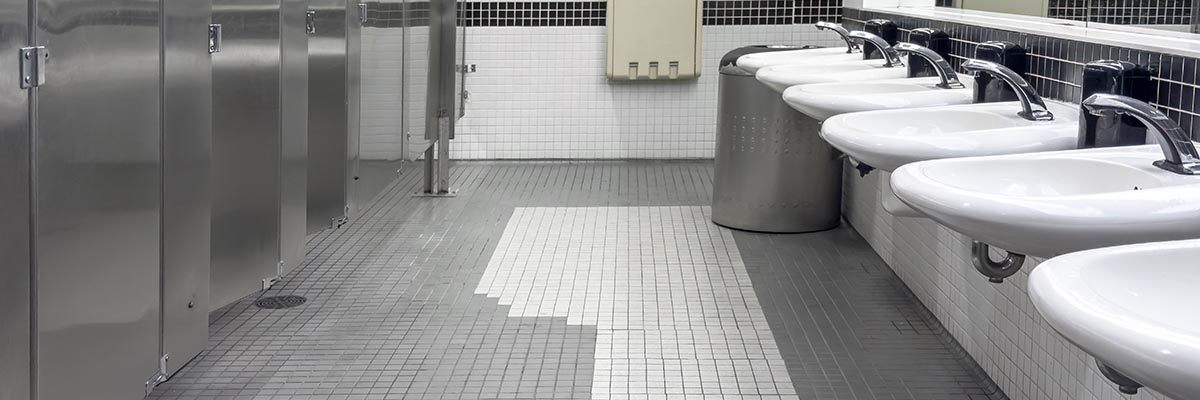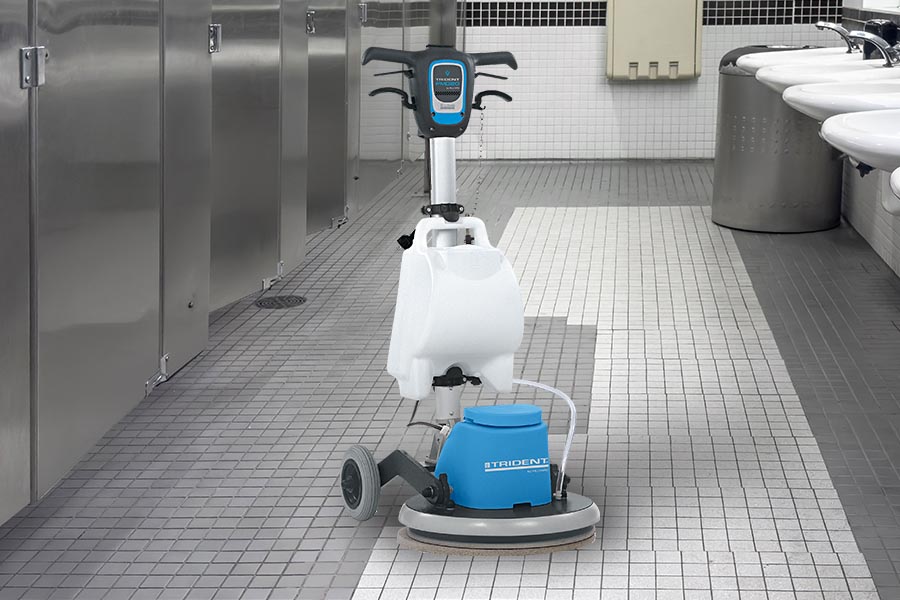How to Restore Ceramic Tile Floors: A Proven System for Cleaner Tile and Brighter Grout
Ceramic tile is a popular flooring choice in commercial restrooms and high-traffic areas thanks to its durability and professional appearance. However, when neglected, grout lines become embedded with soil and tile surfaces reducing the building's cleanliness. Many facilities struggle with this challenge, believing restoration requires difficult or time-consuming processes. Fortunately, you can restore ceramic tile quickly and effectively using Hillyard’s best practice method, which combines Suprox® and Glacier Pads into a system that delivers powerful results, safely and efficiently.

Step-by-Step Procedure to Restore Ceramic Tile
1. Prepare the Area
Begin by picking up debris and sweeping or dust mopping the floor to remove loose soil. This step ensures that cleaning products and equipment can reach the tile and grout effectively.
2. Apply Suprox® Cleaning Solution
Use Hillyard Suprox, a concentrated multi-purpose cleaner powered by stabilized hydrogen peroxide and natural citrus solvents. Dispense it through a Cleaning Companion® (CC17XP), Arsenal One 4D dispenser, or dilute manually at 5 oz. per gallon of water. Apply the solution liberally to the tile floor and allow a dwell time of 3 to 5 minutes. This gives the solution time to loosen soil and brighten grout lines.
3. Scrub with Glacier Pads
Install a Glacier Prep and Polish Pad on an orbital floor machine and scrub the entire surface with a double pass. These specialized open-cell pads are engineered to lift embedded dirt from tile and grout grooves. Use a Glacier Manual Scrub Pad with a pad holder to reach corners, edges, wall-to-floor junctions, and around fixtures.
4. Recover the Dirty Solution and Rinse
After scrubbing, remove the soiled solution with a wet vacuum. Follow up with a clean damp mop to rinse the floor and ensure no residue remains. Avoid leaving excess water, which can cause soils to resettle.
5. Evaluate and Repeat if Needed
Inspect the floor. In cases of heavy buildup, a second application may be necessary. Once the tile and grout are clean, allow the surface to dry before returning the area to service.
6. Maintain the Floor for Long-Term Results
To preserve the restored appearance, clean the tile floor at least weekly using Suprox® at the same 5 oz. per gallon dilution. If mopping, change mop water frequently. For improved efficiency, consider moving from traditional mopping to a Cleaning Companion® machine for faster and more consistent results.

Why This System Works
Suprox® cleans with the power of hydrogen peroxide, helping to brighten grout lines and remove embedded soil. Its citrus-based solvents and versatile formula make it ideal for a wide range of surfaces. When paired with Glacier Pads, which draw out grime from microscopic grooves, the result is a cleaner, brighter floor without relying on powder-based cleaners or strong-smelling products. This system improves outcomes while supporting a safer and more comfortable cleaning experience.
Partner with Hillyard to Improve Results and Lower Costs
Hillyard has cleaning experts located across the United States who can meet with you, assess your facility’s needs, and recommend solutions that not only improve your results but also reduce your total cost to clean. Whether you manage a school, healthcare facility, or public building, our team can help you develop a plan that fits your goals and budget.
Ready to get started? Fill out the form at the bottom of this page, and a Hillyard expert will contact you directly to discuss your cleaning challenges and opportunities.
Frequently Asked Questions
- Is Suprox® safe for regular use on tile and grout?
Yes. Suprox® is designed for use on washable, nonporous surfaces like ceramic tile and grout. It is part of Hillyard’s Green Seal™ certified product line and can be used as part of your daily or weekly cleaning program.
- How do Glacier Pads differ from traditional floor pads?
Glacier Pads are made from a white, open-cell polymeric foam that pulls dirt and grime from the tiny grooves in tile and grout more effectively than standard blue or surface preparation pads.
- Can this method be used in areas other than restrooms?
Absolutely. While ideal for heavily used restroom floors, this method is also effective for ceramic tile found in entryways, locker rooms, kitchens, and other tiled areas throughout a facility.